Agriculture and the Costa Rica Base
Notes from interviews in Nicaragua and Guanacaste province, Costa Rica
April 16-27, 2006
Part of our ambition for the AIM base is to develop agricultural projects. Our hope is to provide supplemental revenue for mission programs and to strengthen ties to the local community. Accordingly, on every trip we spend a portion of our time interviewing people with projects in the vicinity. This trip included visits with Bob Trolese of VERBO who is developing agricultural projects to help support his Nicaraguan orphanages, orphanages on Ometepe with similar ambitions, and the owner of the Hacienda Los Innocentes in Guanacaste, which is a for-profit enterprise tied to a nature lodge in Costa Rica near the Nicaraguan border. A surprising number of non-profit projects we’ve spoken with are working to develop their own agricultural projects. Many cited declining international support as the reason, particularly following September 11th of 2001.
Casa Bernabe and Bob Trolese’s Agricultural projects
Grapes at Casa Bernabe
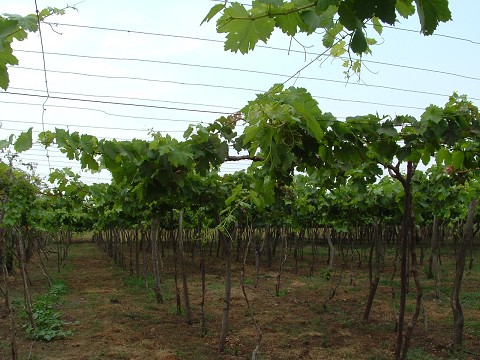 Bob Trolese of VERBO has six ongoing agricultural projects in Nicaragua. He stressed the importance of researching the market and getting distribution in hand before beginning a project, having lived through many early and painful cart-before-the-horse exercises. His best success has been with solid, easy to grow vegetables like tomatoes, cucumbers, squash and green peppers, all with a ready market. Other local crops he mentioned with interesting potential were noni (a cactus fruit, easy to grow and prolific, with implications for diabetes treatment) and passion fruit, which has the advantage of not requiring refrigeration for some time after harvest. He believes CAFTA will provide additional markets for exports throughout the region, such as organic products for the US market. Currently, much of their produce is shipped by truck to Honduras.
Bob Trolese of VERBO has six ongoing agricultural projects in Nicaragua. He stressed the importance of researching the market and getting distribution in hand before beginning a project, having lived through many early and painful cart-before-the-horse exercises. His best success has been with solid, easy to grow vegetables like tomatoes, cucumbers, squash and green peppers, all with a ready market. Other local crops he mentioned with interesting potential were noni (a cactus fruit, easy to grow and prolific, with implications for diabetes treatment) and passion fruit, which has the advantage of not requiring refrigeration for some time after harvest. He believes CAFTA will provide additional markets for exports throughout the region, such as organic products for the US market. Currently, much of their produce is shipped by truck to Honduras.
The Greenhouse at Casa Bernabe
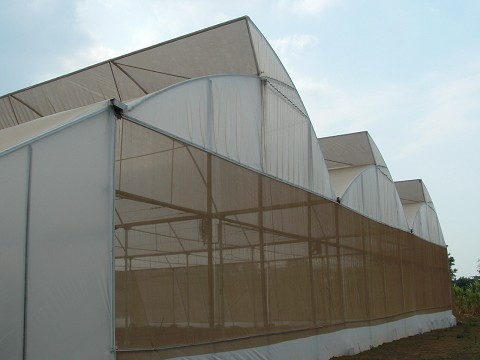
At VERBO’s 120 manzana (a manzana is 7000 square meters or roughly 1.73 acres) farm at Casa Bernabe we saw grapes in cultivation and several fields in-between plantings, but the jewel of their enterprise was a large Israeli-made greenhouse in which they have grown tomatoes, some up to 15 feet in height (an Israeli variety, I was told) and which is operated under organic guidelines. I was told that USAID has been helpful in getting their project off the ground, and that The Nicaraguan Orphan Fund has helped them get the funds together. It seems likely that they will expand the greenhouse project.
The Little Brothers and Sisters of Charity
Pitayah at BSC
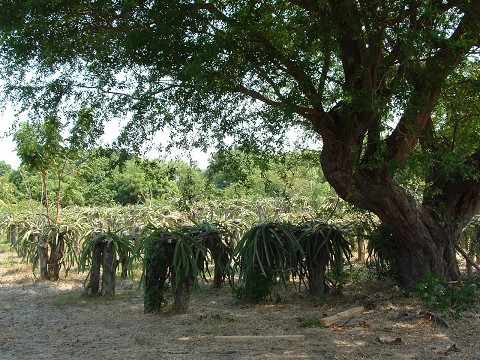 On the island of Ometepe in the middle of Lake Nicaragua we visited the Brothers and Sisters of Charity farm attached to the NPH (Nuestros Pequenos Hermanos) orphanage. Of their 15 manzanas, 4 are planted in neem, with another 3 in pitayah. They also maintain a large organic garden on the property. The farm is in a period of transition as the original crops are being reviewed by a new staff. The pitayah has not panned out for export as they had originally hoped, and hasn’t made much money on the local market either. Some of the older plants have contracted a fungus, and they are planning to replace at least a part of them with platanos (plantains). The platano truck comes by regularly and buys from the various local farms, paying from 600 to 1200 cordobas per carga (10 big heads of platanos make a carga). With 1200 well spaced plants possible per manzana, one can harvest 120 cargas per manzana. At 600 cordobas per carga that’s 72,000 cordobas or $4200 per manzana at current exchange rates, and at 1200 cordobas, that’s $8400 per manzana. However, I’m sure I’ve got something wrong here, as all the note taking was interrupted by the usual English/Spanish confusion that attends my every conversation. Anyway, I’m told they take less water and are easier to grow than pitayah, and judging by the number of top-heavy platano trucks jamming the single car ferry to the island, it looks like a thriving business.
On the island of Ometepe in the middle of Lake Nicaragua we visited the Brothers and Sisters of Charity farm attached to the NPH (Nuestros Pequenos Hermanos) orphanage. Of their 15 manzanas, 4 are planted in neem, with another 3 in pitayah. They also maintain a large organic garden on the property. The farm is in a period of transition as the original crops are being reviewed by a new staff. The pitayah has not panned out for export as they had originally hoped, and hasn’t made much money on the local market either. Some of the older plants have contracted a fungus, and they are planning to replace at least a part of them with platanos (plantains). The platano truck comes by regularly and buys from the various local farms, paying from 600 to 1200 cordobas per carga (10 big heads of platanos make a carga). With 1200 well spaced plants possible per manzana, one can harvest 120 cargas per manzana. At 600 cordobas per carga that’s 72,000 cordobas or $4200 per manzana at current exchange rates, and at 1200 cordobas, that’s $8400 per manzana. However, I’m sure I’ve got something wrong here, as all the note taking was interrupted by the usual English/Spanish confusion that attends my every conversation. Anyway, I’m told they take less water and are easier to grow than pitayah, and judging by the number of top-heavy platano trucks jamming the single car ferry to the island, it looks like a thriving business.
Neem at BSC
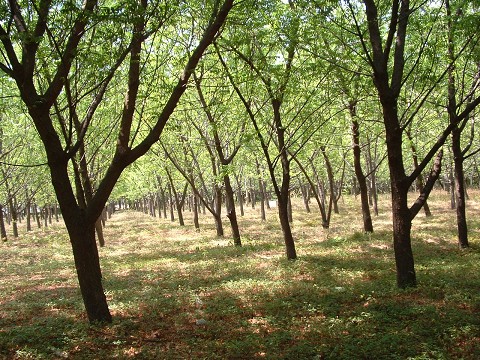 The neem has never been harvested, as they have no press to process the oil. (neem oil is a good organic pesticide, and you’ll see it listed among ingredients if you peruse the appropriate aisle in your local farmers’ co-op). They are researching the possibility of getting a press for the farm, as there is only one processing plant in the entire country of Nicaragua, and that not on Ometepe. The trees are 7 years old and first produce fruit at 3 years, with fruit on the trees from May to June. They do need some watering, though the more established plants are now taking less. Mary Beth, a dear friend and seasoned Central American traveling companion, mentioned to Jayden (the farm manager) that California grape farmers have three years to wean themselves of toxic insecticides, making a good case for increased neem sales at least to that market.
The neem has never been harvested, as they have no press to process the oil. (neem oil is a good organic pesticide, and you’ll see it listed among ingredients if you peruse the appropriate aisle in your local farmers’ co-op). They are researching the possibility of getting a press for the farm, as there is only one processing plant in the entire country of Nicaragua, and that not on Ometepe. The trees are 7 years old and first produce fruit at 3 years, with fruit on the trees from May to June. They do need some watering, though the more established plants are now taking less. Mary Beth, a dear friend and seasoned Central American traveling companion, mentioned to Jayden (the farm manager) that California grape farmers have three years to wean themselves of toxic insecticides, making a good case for increased neem sales at least to that market.
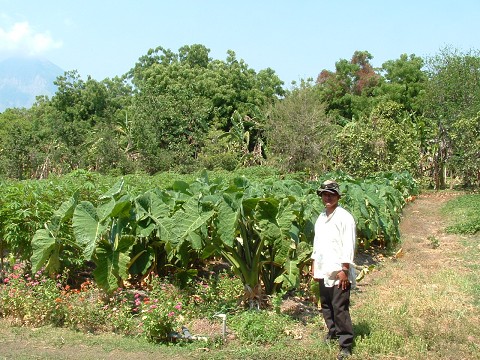 The BSC farm has a large and impressive organic garden as well. Rice straw (zacate grass) left over from extensive rice cultivation is an inexpensive way to mulch the raised beds. It may also have uses as a cattle feed. Palm fronds are spread over seedlings to protect them from the hot sun during germination. Yuca was prominent in the garden (it is re-propagated with a stem slipped directly into the ground) quiquesque (a potato like root) watermelons, cucumber, carrots, patata (quite large, taking only 2.5 months to harvest and good fried but tasteless when boiled), beets, onions, etc were in cultivation as well. Large mounds of lemon grass help to discourage insects. Jayden mentioned that mandarin oranges do well locally, as do many tropical fruit trees, but noted that one should be careful to use local varieties of trees; for example, some very lovely imported avocados produce almost no fruit, while local varieties do extremely well.
The BSC farm has a large and impressive organic garden as well. Rice straw (zacate grass) left over from extensive rice cultivation is an inexpensive way to mulch the raised beds. It may also have uses as a cattle feed. Palm fronds are spread over seedlings to protect them from the hot sun during germination. Yuca was prominent in the garden (it is re-propagated with a stem slipped directly into the ground) quiquesque (a potato like root) watermelons, cucumber, carrots, patata (quite large, taking only 2.5 months to harvest and good fried but tasteless when boiled), beets, onions, etc were in cultivation as well. Large mounds of lemon grass help to discourage insects. Jayden mentioned that mandarin oranges do well locally, as do many tropical fruit trees, but noted that one should be careful to use local varieties of trees; for example, some very lovely imported avocados produce almost no fruit, while local varieties do extremely well.
Los Innocentes Farm, Guanacaste Passion Fruit at Los Innocentes
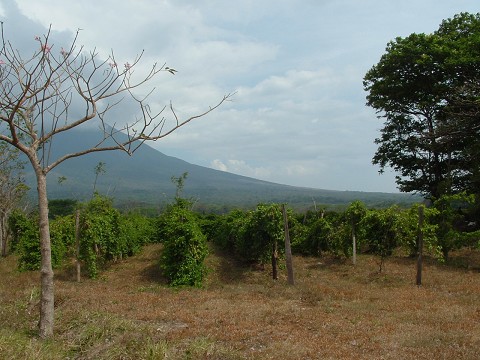 Perhaps the nicest agricultural project I’ve visited was the farm at Los Innocentes Lodge near Santa Cecilia in Costa Rica. Jaime Viquez’s family has owned the farm, about 1400 manzanas, for three generations, and they’ve done a lot with it. His pastures were impeccable, and they are productive enough to sell hay at a handsome profit. He had over a hundred head of horses, beautiful animals used in his trail rides, and well cared for. His prize crop, however, is passion fruit, which is a recent addition to his product base. He has tested several varieties and settled on one that he says is ready for first harvest in six months, produces every six months thereafter, and grows in attractive rows on trellises very much like a vineyard. He’s using wooden supports with wires now, but will soon replace the wood with termite proof cement posts. He plants the rows 2 meters apart (and 10 meters between plants) and plants beans between the rows. After the beans are harvested, he turns them under to enrich the soil for the passion fruit. One advantage of this product, mentioned earlier, is that passion fruit don’t need refrigeration for some time after harvesting. He believes that the vines are good for 6 or 7 years. He quoted productivity at 14 to 17.5 tons per manzana, and $3500 per ton. At $49,000 per manzana, I have to assume I heard wrong. Still, he was very excited and plans on putting more acreage under vines and hopes to convince other farmers in the area to do the same.
Perhaps the nicest agricultural project I’ve visited was the farm at Los Innocentes Lodge near Santa Cecilia in Costa Rica. Jaime Viquez’s family has owned the farm, about 1400 manzanas, for three generations, and they’ve done a lot with it. His pastures were impeccable, and they are productive enough to sell hay at a handsome profit. He had over a hundred head of horses, beautiful animals used in his trail rides, and well cared for. His prize crop, however, is passion fruit, which is a recent addition to his product base. He has tested several varieties and settled on one that he says is ready for first harvest in six months, produces every six months thereafter, and grows in attractive rows on trellises very much like a vineyard. He’s using wooden supports with wires now, but will soon replace the wood with termite proof cement posts. He plants the rows 2 meters apart (and 10 meters between plants) and plants beans between the rows. After the beans are harvested, he turns them under to enrich the soil for the passion fruit. One advantage of this product, mentioned earlier, is that passion fruit don’t need refrigeration for some time after harvesting. He believes that the vines are good for 6 or 7 years. He quoted productivity at 14 to 17.5 tons per manzana, and $3500 per ton. At $49,000 per manzana, I have to assume I heard wrong. Still, he was very excited and plans on putting more acreage under vines and hopes to convince other farmers in the area to do the same.
Passion Fruit on the Vine
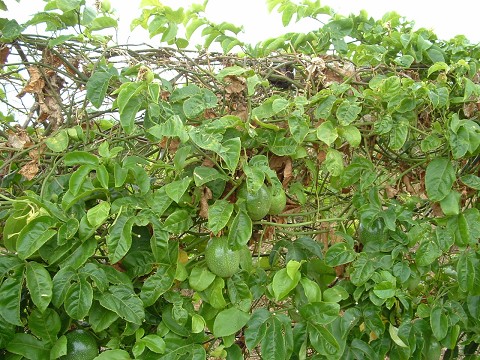 It’s encouraging to see the vigor with which people are reconsidering agriculture in the area. We love to see people working together to improve on the agrarian way of life that has provided the foundation for these villages. This seems preferable to the sad communities who have bought into the notion of prosperity through manufacturing jobs in the city. Because, typically, these jobs last for a short while and move on when the next low cost work force is identified somewhere else. There’s a great willingness to work together in the smaller communities, and our hope is that in helping to strengthen the farming communities we will be helping to bind ourselves more closely to the people we’re committed to serve. As always, if these notes suggest any insights you’d like to share, please feel free to get back in touch with us. We’d love to hear from you.
It’s encouraging to see the vigor with which people are reconsidering agriculture in the area. We love to see people working together to improve on the agrarian way of life that has provided the foundation for these villages. This seems preferable to the sad communities who have bought into the notion of prosperity through manufacturing jobs in the city. Because, typically, these jobs last for a short while and move on when the next low cost work force is identified somewhere else. There’s a great willingness to work together in the smaller communities, and our hope is that in helping to strengthen the farming communities we will be helping to bind ourselves more closely to the people we’re committed to serve. As always, if these notes suggest any insights you’d like to share, please feel free to get back in touch with us. We’d love to hear from you.





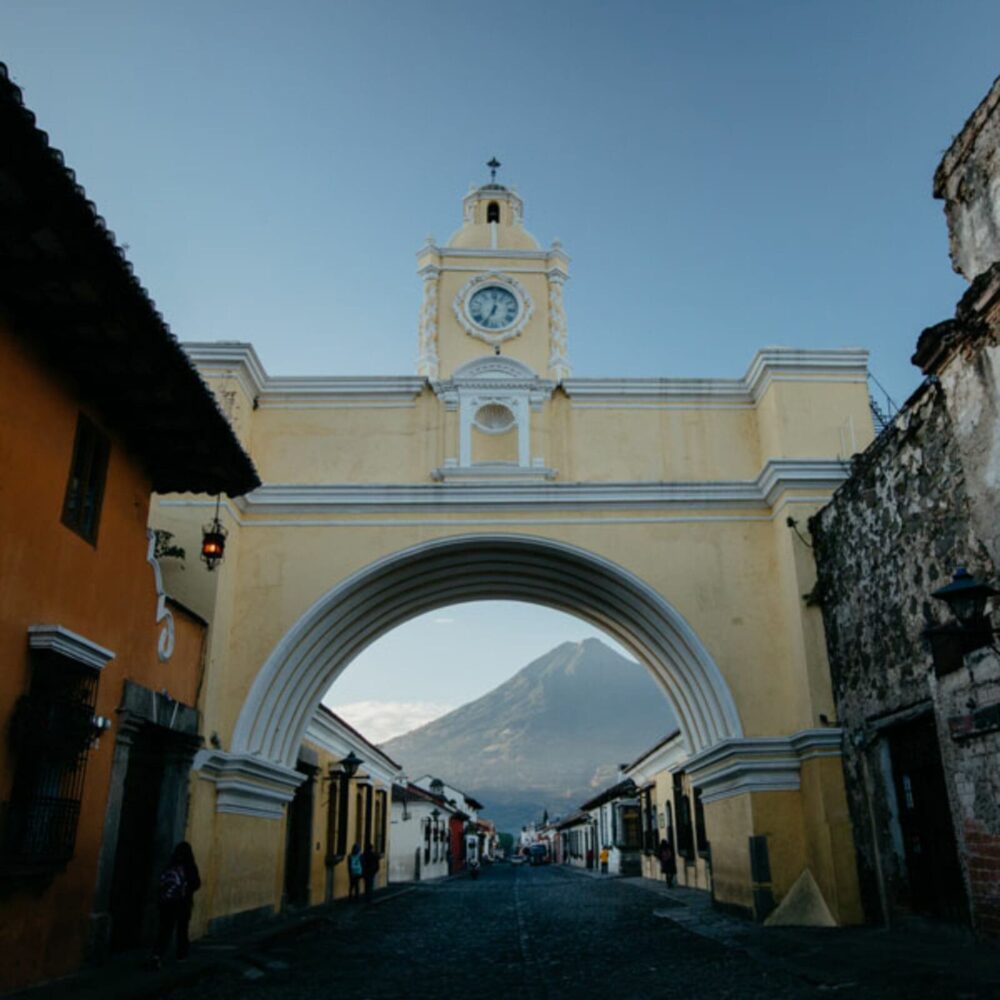



Dear Sir Or Madam
How are you? I want to import some lemon tree plant i need price and the quantity you have , please contact me,
Thank you
Sincerely
Eric
It is now impersative that people the world over rediscover local farming.
That said, it seems absurd strictly limiting my points to the need for ‘organic’ farming means and methods, but we must all try to reduce the chemical component in what we eat.
We have been composting since 1966 here in Arkansas and I am hoping to set-up my own small farm in Costa Rica. This areicle explains the realities I might be facing. But, it does not address the critical nature of the coming food famine.
Furthermore, I am way ahead of the curve, as I’ve been feeling the need to do this for three years, and now many of the potential ‘investors’ have lost all they had to ‘risk’ in the stock market. Wouldn’t it be neat if they had the wisdom to invest the remaining few thousand dollars in a productive farm-village…